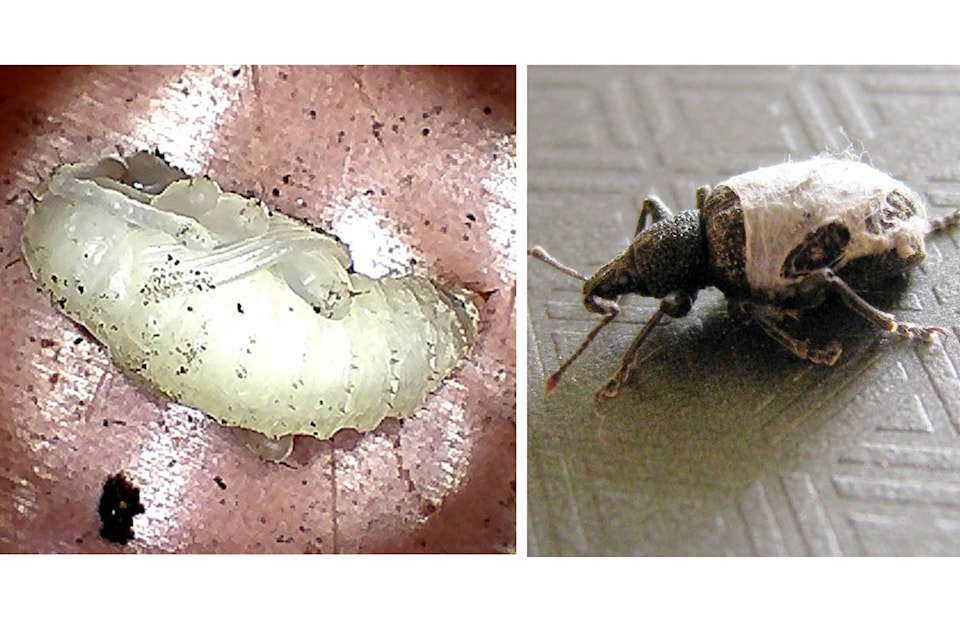Leslie Cox
Special to The Record
Avid gardeners naturally spend a lot of time face first in the soil. You frequently have to get down to plant level and most often, this is where surprises are revealed.
Case in point: I was on my hands and knees doing some digging with a hand trowel and a pure white oblong thing rolled out of the loosened soil. I picked it up and placed it in the palm of my hand. Only about a quarter of an inch long, it began to writhe in place. Definitely, something live but what?
Being the curious gardener I am, I immediately went in search of a suitable container to put it in until I could get out my microscope for further investigation. I also added one more of the mysterious white things to the container from the same spot in the garden.
Under the microscope, I could see the white things were most likely pupae of some insect species but was stumped as to which species. In all my years of gardening, I had not come across these white pupae before.
After much searching through my insect books and on the internet, I was finally able to identify them as the pupae stage of the root weevil pest. I had my diagnosis confirmed when I went back to the container and discovered two black vine weevil adults, Otiorhyncus sulcatus, instead of the white pupae. Good thing I had not returned them to the garden after photographing them through my microscope!
The weevil pupae were not the only discovery, however. John picked up a caterpillar he had not seen before in our garden and put it in an old pepper shaker bottle for me. (I have him so well-trained, don’t I?)
Did not need the microscope for this one but I had to place the pepper shaker in the fridge for an hour in order to slow down the caterpillar’s metabolism long enough for me to get a still photo of it. (Really hard to identify an insect from a fuzzy photo because sometimes proper ID is in the minute details.)
Thanks to my insect book library and the internet, I was eventually able to identify John’s mystery caterpillar. In fact, this particular caterpillar led me to the genus where I was able to identify two more mystery caterpillars who have been languishing as unknowns in my photo files.
John’s find turned out to be the caterpillar of the silver-spotted tiger moth, Lophocampa argentata. These larvae feed on conifer needles, particularly Douglas fir and Sitka spruce. They are not considered to be a serious pest, although there have been some mild outbreaks in the past.
The larvae form loose webs in the tree branches where they overwinter. At this time of year, the caterpillars break away on their own to finish feeding before pupating in July. (Pupation is in the host trees or can be in litter on the ground, which is where John found his.) Adults emerge later in July into August. Mating and egg-laying then occurs with young larvae hatching in late summer to feed and then overwinter. Thankfully, there is only one generation per year.
My two mystery caterpillars turned out to be a spotted tussock, Lophocampa maculata (very similar to a banded teddybear caterpillar) and the caterpillar of the rosy aemilia tiger moth, Lophocampa roseate.
The spotted tussock tiger moths are active from May through July. The caterpillars appear late July through September to feed mainly on poplar and willow trees. The rosy aemilia tiger moth caterpillar is a more finicky eater preferring Norway maples, but may chew on other maples. Neither of these caterpillars are considered serious pests.
Certainly not like the black vine weevil!
Leslie Cox co-owns Growing Concern Cottage Garden in Black Creek. Her website is at www.duchessofdirt.ca
